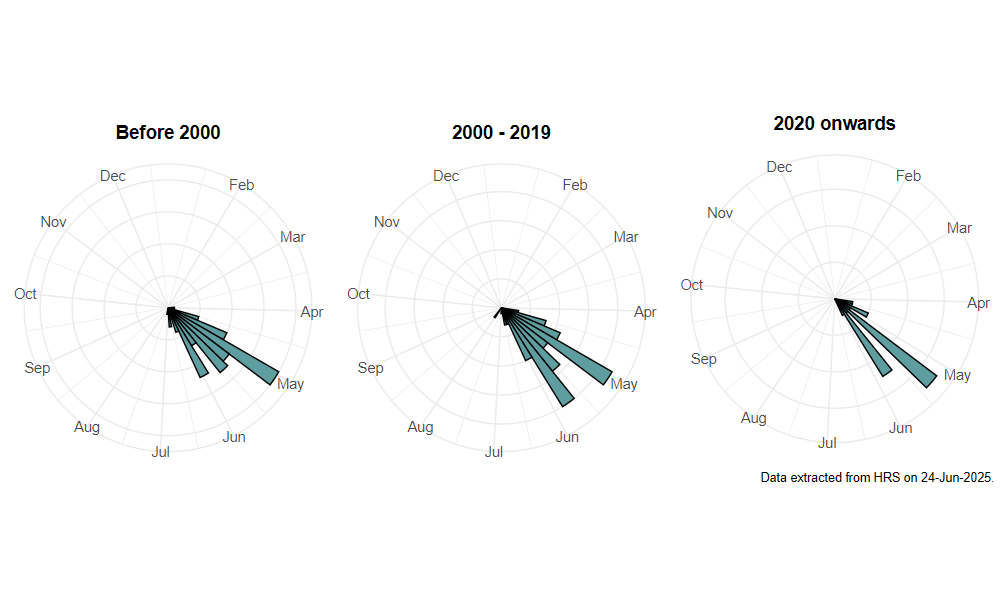Cheilosia pubera (Zetterstedt, 1838)
Identification
Identification difficulty = 4. ![]()
![]() according to Ball & Morris, 20241
according to Ball & Morris, 20241
Biology
The larva feeds on the roots of Water Avens Geum rivale. Adults have been found at flowers of Kingcups Caltha palustris, but are more frequently found sunning on leaves at scrub edges, in wet pasture, fen edges and lake shores. They fly low over the vegetation in grassy, open areas often along streams or other wet edges. It is best found by visiting places where the host plant grows in abundance during the flight period (June to August, peak in July).
Flight period
The following plots show the number of unique records per week excluding those reported to be of immature stages.

Status
Lower Risk (Nationally scarce) - Ball & Morris, 20142. Notable - Falk, 19913. Rare (RDB3) - Shirt, 19874.
Distribution
Although there are scattered records from southern and western England, this species is primarily northern and is possibly under-recorded. It can be very abundan where it occurs.

Trends
The following plots show the Frescalo TFactor vs year and a map of the rescaled frequency (all records) for the species.
-
Ball, S., & Morris, R. (2024). Hoverflies of Britain and Ireland. WILDGuides (3rd ed.). Oxford: Princeton University Press. ↩
-
Ball, S., & Morris, R. (2014). A review of the scarce and threatened flies of Great Britain. Part 6: Syrphidae. ( No. 9). Species status (pp. 1–130). Peterborough: JNCC. ↩
-
Falk, S. (1991). A review of the scarce and threatened flies of Great Britain. ( No. 39). Research and Survey in Nature Conservation (pp. 1–194). Peterborough: NCC. ↩
-
Shirt, D. (Ed.). (1987). Red Data Books: 2. Insects. Peterborough: NCC. ↩